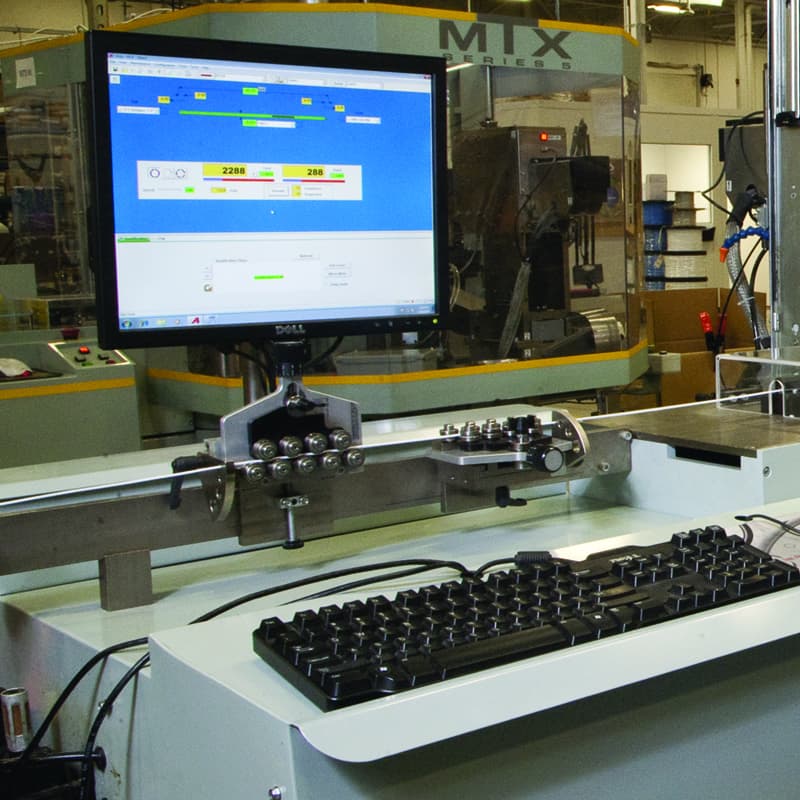How Raw Material Shortages Are Affecting the Manufacturing Industries
The last two years have been globally brutal for the manufacturing industry. With the Covid-19 pandemic, we have experienced unprecedented supply chain interruptions, natural disasters, and Raw Material shortages which created the perfect storm of delays and increased costs nearly across the board.

Copper Shortages
Copper, an important component in nearly every advanced manufacturing process and many products sold globally, recently surged past $10,000/ton, with some analysts predicting it could hit double that by the year 2025. This surge caused David Neuhauser, managing director of Livermore Partners to call copper “the new oil.” Another analyst pointed to the nickel shortages in 2006-2007 which forced nickel prices upwards by as much as 300%.
Michael Widmer, a commodity strategist for Bank of America recently told CNBC “In our view, scrap supply is critical and our analysis suggests that scrap usage at smelters/refiners could increase from around 4,200t in 2016 to 6,700t by 2025.”
“If our expectation of increased supply in secondary material, a non-transparent market, did not materialize, inventories could deplete within the next three years, giving rise to even more violent price swings that could take the red metal above $20,000/t ($9.07/lb).”
Plastic and Resin Shortages
But it’s not just the Copper market being hit. We’re also seeing large scale disruptions in the supply chain for many of the raw materials needed to manufacture plastics. Specifically, the polyethylene (PE), polypropylene (PP), and monoethylene (MEG) supplies have hit record shortages, causing massive delays for many companies in the Medical Device, Aerospace, Military, and Industrial manufacturing industry.
The unprecedented winter storms last winter in Texas, which is home to the largest petrochemical complex in the world, caused many companies to have to shut down. Estimates were that it would take upwards of 6 months for these companies to recover from the effects of the storm. Companies were already seeing massive setbacks and delays as a result of the new COVID-19 safety precautions and changes in the volatile oil markets.
As if that wasn’t enough, several of the major manufacturers have been shut down by recent hurricane activities, including two of the largest producers, LyondellBasell in Louisiana and Chevron Phillips Chemical in Texas. Many supply chain managers failed to adequately monitor these situations, and because of the relative low cost of these components, did not anticipate these kinds of interruptions.

Raw Material Shortages Have a Broad Impact
These plastics are used in a wide array of products, from food packaging to cell phones and heart monitors to car parts. Combine these shortages with the increased demand for these products brought about by the pandemic, and you have the perfect storm of manufacturing delays, price increases, and angry customers.
It wasn’t just the plastics industry that was hit hard by the Texas winter storm, but the Resin industry also took a staggering blow. This disastrous storm shut down upwards of 85% of the US PE and PP production. Resin supplies had already been reduced in the six months prior to the storm due to a series of other disruptions, including shipping container shortages and the disastrous blockage of shipping lanes.
As if that wasn’t enough, a massive fire at the Pemex Cangrejera Petrochemical complex in Mexico took out another major producer of PE Resin, further squeezing the already limited supplies on a global scale. In 2020, around 40% of North American PE production was sold into the export market. Most producers kept massive inventories on hand, which helped temporarily fill their domestic market obligations and contracts. Unfortunately, those supplies have continued to dwindle, with no relief in sight. Ironically, we’ve seen a reversal of the market, with PE imports flowing into the North American market from across the globe.

No End of Raw Material Shortages In Sight
While we’ve seen unprecedented imports to maintain the liquidity of the market, even the most optimistic projections say this shortage will continue well into the year 2022, and maybe even beyond. These shortfalls have already exceeded both the 1953 resin crisis, as well as the oil embargo market of 1973, made worse by the magnitudinous increase in the supply and demand from only a few generations ago. The market uncertainty at the moment is staggering, which can make logistical planning a complete nightmare.
All of these factors have contributed to global shortages in many sectors. Medical Manufacturing has been one of the hardest hit, but even Aerospace and Military manufacturers are feeling the squeeze. The FDA keeps an updated list of medical devices that are seeing shortages, which include ventilators, specimen collection equipment, swabs, culture mediums, and clinical sample concentrators among others.
But beyond products used to help contain the COVID-19 pandemic, these new demands have had a rippling effect across the medical device market, causing supply chain shortages, and manufacturing shortfalls for products unrelated to the treatment of the novel coronavirus.
There Are Alternate Solutions
But take heart, not all is lost. Minnesota Wire, and our team of expert Engineers are here to help. We are ISO 9001: 2015 and AS9100 D Certified, as well as RoHS Compliant, IPC 620 Harness Certified, and we are a MIL-STD Manufacturer.
One of our greatest strengths is our ability to help design alternative solutions for your engineering needs. We can help design and create alternative solutions that use available and alternative materials, to help you bypass the ongoing global shortages that are slowing everyone down.
For example, Minnesota Wire successfully replaced copper conductor with a nickel plated carbon alternative for several of our customers. The key to a swift transition lies in a company’s willingness to re-examine the original design or print, and approve the alternative materials in a timely fashion. Luckily, we have the alternatives as well as the insightful justification to help you drive the changes for your company and customers. Having a design with a couple approved materials will help with your supply chain needs in the face of continuous raw material shortages well into the future.

Minnesota Wire Can Help!
If you’re feeling the pinch of raw material shortages, let’s talk. Our team can help find a custom solution to your manufacturing needs.
